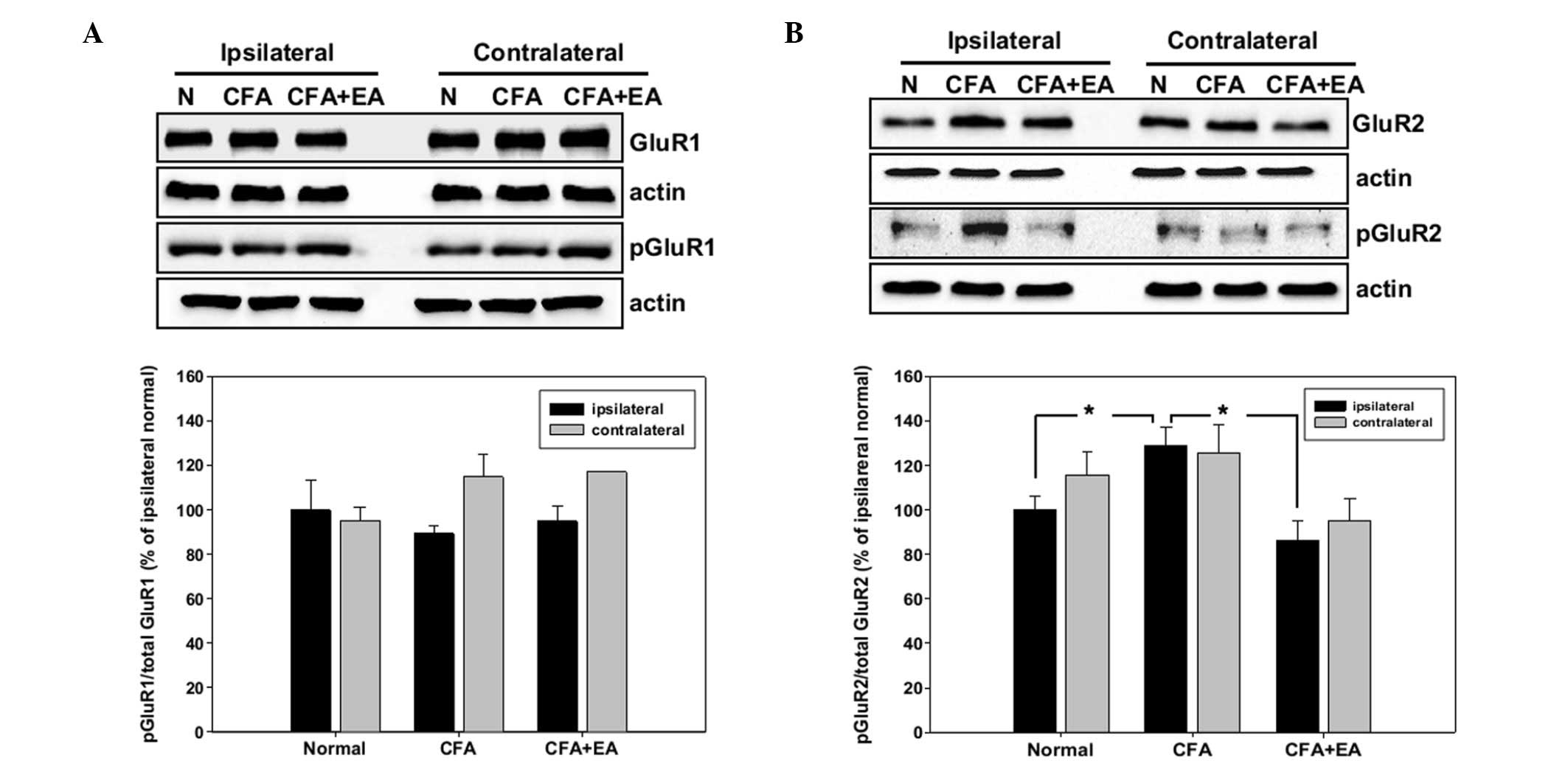Effects of electroacupuncture on spinal α-amino-3-hydroxy-5-methyl-4-isoxazole propionic acid receptor in rats injected with complete Freund's adjuvant
- Authors:
- Published online on: August 14, 2013 https://doi.org/10.3892/mmr.2013.1633
- Pages: 1130-1134
Metrics:
Total
Views: 0 (Spandidos Publications: | PMC Statistics:
)
Total PDF Downloads: 0 (Spandidos Publications: | PMC Statistics:
)
Abstract
The effects of electroacupuncture (EA) on spinal α-amino-3-hydroxy-5-methyl-4-isoxazole-propionic acid (AMPA) receptor subunits in male rats injected with complete Freund's adjuvant (CFA) were investigated. Bilateral EA stimulation (2 Hz, 1 mA) was administered by needle insertion for 30 min once daily at acupoints corresponding to Zusanli and Sanyinjiao, and the thermal thresholds were measured. To examine the changes in the AMPA receptor subunits, the L4-5 segments of the spinal cord were analyzed by qPCR, western blot analysis and immunohistochemistry. The CFA-induced thermal sensitivity of the rat hind paw was significantly inhibited by EA stimulation from day 3 following CFA injection. On day 5 following CFA injection, there were no significant changes in the expression of the AMPA receptor GluR1 subunit in the CFA-injected rats with or without EA stimulation, compared with the control rats. However, the expression of the GluR2 subunit was significantly decreased by CFA treatment. Western blot analysis revealed that the expression of the phosphorylated GluR1 subunit in the control rats was not significantly different compared with that in the CFA-injected rats with and without EA stimulation. However, phosphorylation of the ipsilateral GluR2 subunit was significantly increased in the CFA-injected rats, and this activation was prevented by EA stimulation. Immunohistochemical analysis revealed a greater expression of phospho-GluR2 following CFA injection, which was inhibited by EA stimulation. These results suggested that phosphorylation of the AMPA receptor, particularly the GluR2 subunit, may be important in EA analgesia of CFA-induced inflammation.














